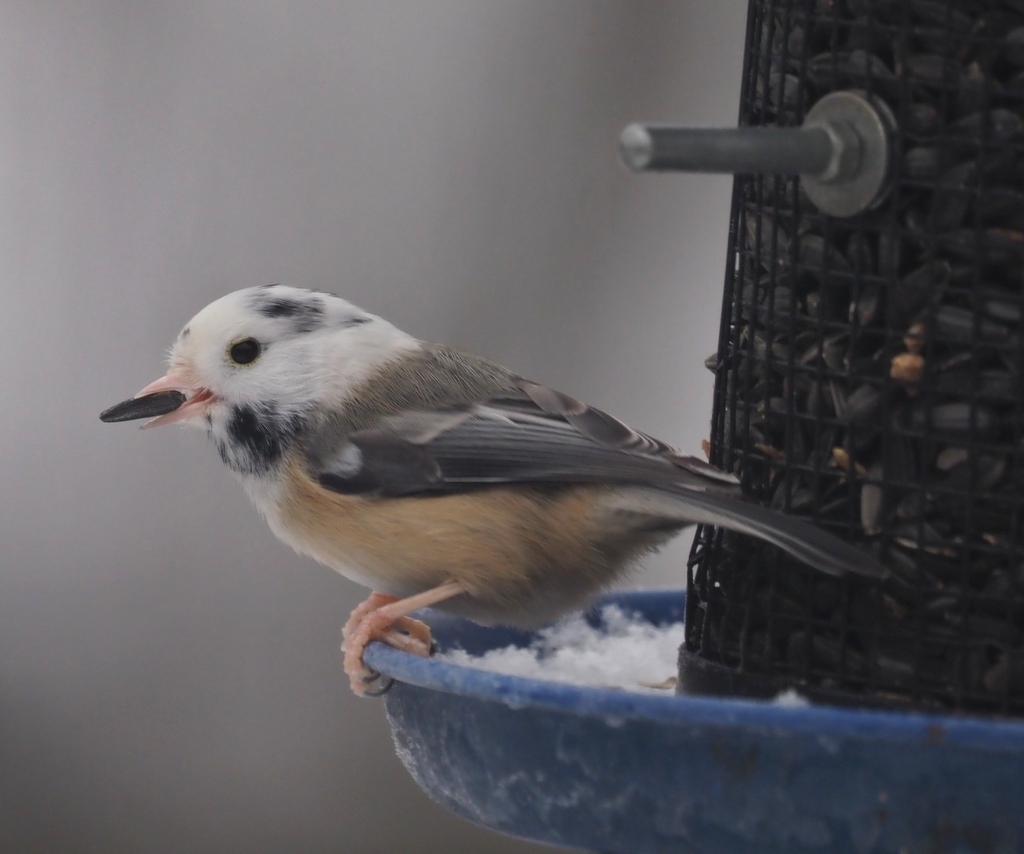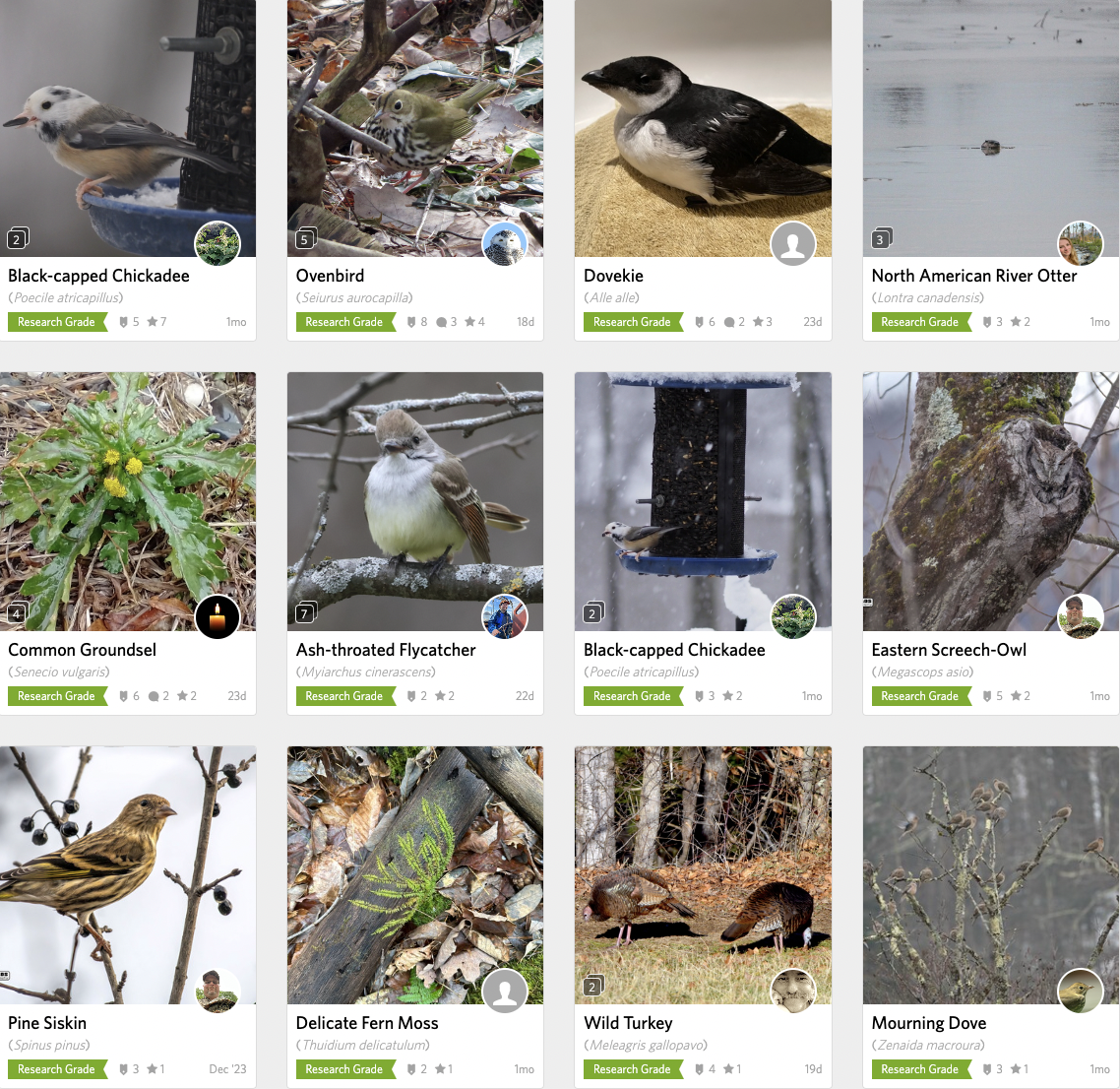
A Black-capped Chickadee seems to have lost most of its namesake Black cap! © @c_burns802
Congratulations to @c_burns802 for winning the December 2023 Photo-observation of the Month for the Vermont Atlas of Life on iNaturalist! Their photos of an exceptionally unique Black-capped Chickadee received the most faves of any iNaturalist observation in Vermont during the past month.
The last Photo-observation of the Month for 2023 offers us an up-close look at leucism! If we’re splitting hairs (or in this case, feathers) it’d be more accurate to say that this special chickadee is exhibiting signs of ‘partial leucism’ as the abnormalities of this bird’s plumage are limited to a few specific areas. Fully albino birds exhibit entirely white plumage and pinkish bare parts (eyes, bill, legs) due to a genetic mutation that limits the production of the pigment melanin, while partially leucistic birds such as our chickadee here exhibit patches of white feathers as a result of defects of groups of pigment cells. You’d be hard-pressed to find a leucistic bird in any field guide, and as such these unique individuals can often be quite challenging to identify; thankfully, enough of this bird’s ‘normal’ plumage was maintained, and the overall shape, structure, and behavior of this bird help identify it as a Black-capped Chickadee. In addition to the fascinating biology of leucism in birds, these leucistic individuals often are beloved by the birders that host them at feeders. The individuality of birds can be masked by their uniform patterns and plumages, but leucistic birds encourage us to look out for that one unique individual, and perhaps even get to know the patterns and behaviors of an individual bird intimately.

With 2,322 observations submitted by 367 observers in December, it was very competitive. Click on the image above to see and explore all of the amazing observations.
Visit the Vermont Atlas of Life on iNaturalist where you can vote for the winner this month by clicking the ‘fave’ star on your favorite photo-observation. Make sure you get outdoors and record the biodiversity around you, then submit your discoveries and you could be a winner!










